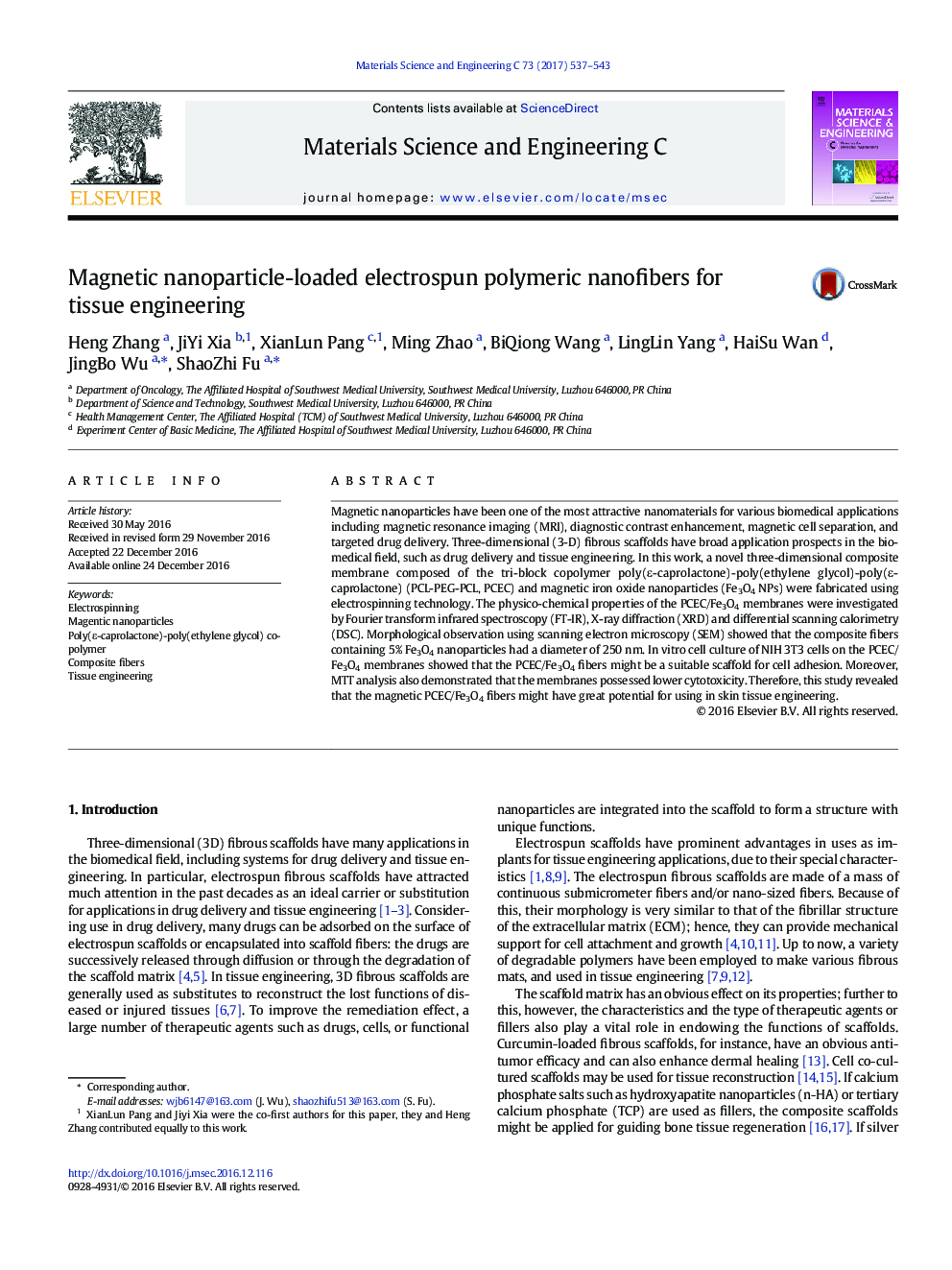| کد مقاله | کد نشریه | سال انتشار | مقاله انگلیسی | نسخه تمام متن |
|---|---|---|---|---|
| 5434959 | 1509148 | 2017 | 7 صفحه PDF | دانلود رایگان |
- A magnetic fibrous scaffold was prepared using magnetic Fe3O4 NPs and a degradable copolymer.
- The obtained PCEC/Fe3O4 composite membranes had good magnetic response.
- The magnetic nanofibers were suitable for cell attachment and proliferation.
Magnetic nanoparticles have been one of the most attractive nanomaterials for various biomedical applications including magnetic resonance imaging (MRI), diagnostic contrast enhancement, magnetic cell separation, and targeted drug delivery. Three-dimensional (3-D) fibrous scaffolds have broad application prospects in the biomedical field, such as drug delivery and tissue engineering. In this work, a novel three-dimensional composite membrane composed of the tri-block copolymer poly(ε-caprolactone)-poly(ethylene glycol)-poly(ε-caprolactone) (PCL-PEG-PCL, PCEC) and magnetic iron oxide nanoparticles (Fe3O4 NPs) were fabricated using electrospinning technology. The physico-chemical properties of the PCEC/Fe3O4 membranes were investigated by Fourier transform infrared spectroscopy (FT-IR), X-ray diffraction (XRD) and differential scanning calorimetry (DSC). Morphological observation using scanning electron microscopy (SEM) showed that the composite fibers containing 5% Fe3O4 nanoparticles had a diameter of 250 nm. In vitro cell culture of NIH 3T3 cells on the PCEC/Fe3O4 membranes showed that the PCEC/Fe3O4 fibers might be a suitable scaffold for cell adhesion. Moreover, MTT analysis also demonstrated that the membranes possessed lower cytotoxicity. Therefore, this study revealed that the magnetic PCEC/Fe3O4 fibers might have great potential for using in skin tissue engineering.
In this study, we prepared a kind of magnetic three-dimensional scaffolds (PCEC/Fe3O4) using iron oxide nanoparticles (Fe3O4 NPs) and poly(ε-caprolactone)-poly(ethylene glycol)-poly(ε-caprolactone) copolymer through electrospinning technique. Their crystallization property, thermal property, in vitro degradation, and morphology were investigated. Furthermore, the cell compatibility and toxicity were also evaluated using NIH 3T3 cells. The results showed that the Fe3O4/PCEC composite membrane had great potential application in skin tissue engineering.135
Journal: Materials Science and Engineering: C - Volume 73, 1 April 2017, Pages 537-543
